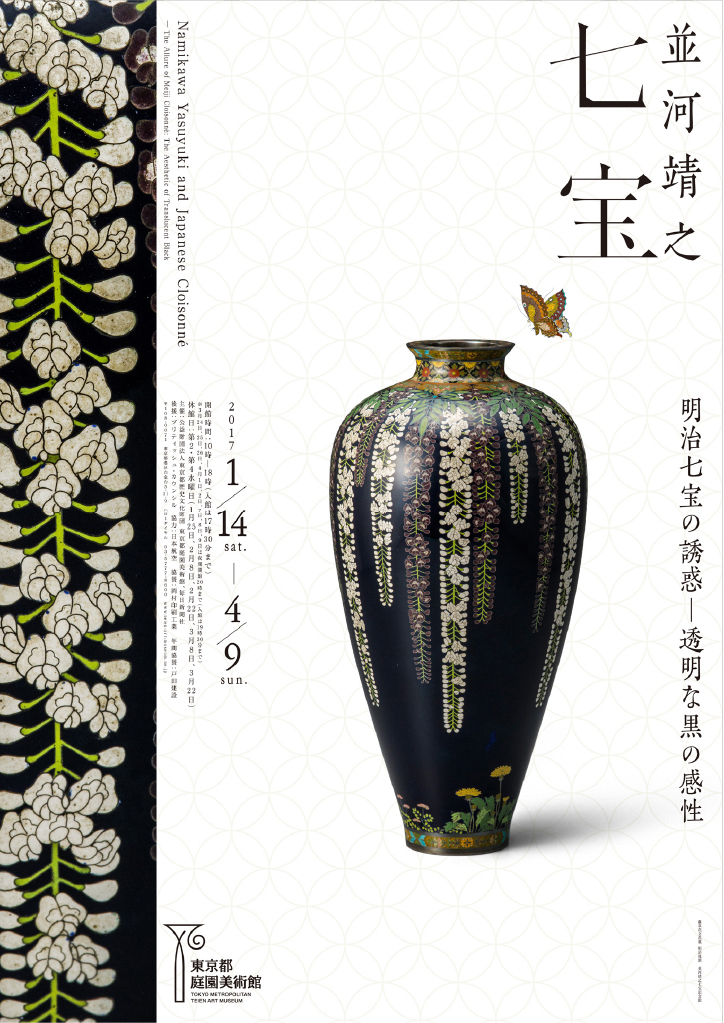1. Translucent Black
Until early in the Meiji period, the enamels used in cloisonné in Japan were mostly cloudy and opaque. The range of colors was limited. Namikawa changed that. His extensive research enabled him to develop enamels, including translucent ones, in a variety of colors, making possible subtle color combinations and gradations. A further development was his translucent black enamel, a distinctive feature of his work. Translucent, gleaming black backgrounds make his colorful bird-and-flower motifs even more striking.
2. A Meiji-era High-Tech Startup
Cloisonné is a type of metal craft in which vitreous enamel paste is applied to a metal surface and the piece is then fired. From the sixteenth through the early nineteenth century, cloisonné was used mainly on architectural fittings (door pulls and decorative nail covers) and for sword guards. By the closing decades of the Tokugawa shogunate, however, it had largely been forgotten, except in the domain of Owari, where cloisonné production was revived in the 1850s. In the Meiji period, the German chemist Gottfried Wagener, one of many foreign specialists hired by the government to help introduce new technologies into Japan, brought further advances based on the Owari cloisonné techniques. Cloisonné thus made a new beginning as, in effect, a high-tech startup, as part of Japan’s efforts, as a modern state, to incorporate new technologies and establish new industries. In that newly emerging industry, Namikawa Yasuyuki stood out for his unrivaled technique and artistic sensibility.
3. The First Retrospective to Focus on Namikawa Yasuyuki’s Life and Art
In the Meiji period, the craft arts were a means of showing the world the power of Japanese technology and Japan’s unique sense of beauty, both to promote exports and earn foreign exchange and to enhance national prestige. The many recent exhibitions focusing on those craft techniques have spurred interest in this aspect of Meiji history. Yet, while techniques, choice of materials, and their further development are critical, it is only when the artist starts with a concept of what to make and applies his or her aesthetic sense and artistic sensibility that an art or craft object can take form. This exhibition explores Namikawa Yasuyuki’s life and work, showcasing not only the techniques of Meiji-period craft arts but the aesthetics that defined them, for a deeper appreciation of his achievements in cloisonné.


